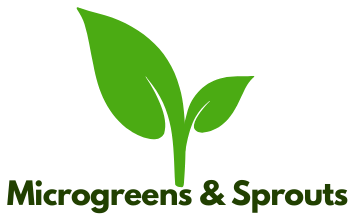Cabbage
Cabbage Seeds
Cabbage seeds are small, round seeds that come from the cabbage plant (Brassica oleracea). When sprouted, these seeds produce tender, crunchy sprouts with a mild cabbage flavor and a slightly peppery bite. Cabbage sprouts are commonly used in salads, sandwiches, and as a garnish.
History of the Seed
Cabbage has been cultivated for over 4,000 years, originating in Europe and the Mediterranean region. Sprouting cabbage seeds for consumption is a more recent practice, gaining popularity as a nutritious addition to raw food diets and health-conscious eating habits worldwide.
Nutritional Information
Cabbage sprouts are rich in vitamins and minerals, including:
- Vitamin C
- Vitamin K
- Vitamin A
- Folate
- Calcium
- Iron
- Dietary fiber
They also contain antioxidants and glucosinolates, which contribute to their health benefits.
Nutrition Benefits
- Boosts Immunity: High vitamin C content supports immune function.
- Supports Bone Health: Vitamin K is essential for bone metabolism.
- Aids Digestion: Fiber promotes healthy digestion.
- Antioxidant Properties: Helps protect cells from damage.
- Detoxification: Glucosinolates support liver detox processes.
Sprouting Process and Directions
- Prepare Seeds: Measure 1-2 tablespoons of cabbage seeds.
- Soak: Place seeds in a clean jar or sprouting tray and cover with water. Soak for the recommended time.
- Drain & Rinse: Drain water thoroughly; rinse seeds with fresh water.
- Sprout: Place the jar or tray at an angle to allow air circulation and excess water to drain. Rinse and drain seeds 2-3 times daily.
- Harvest: When sprouts reach desired length, give a final rinse and drain well.
Soak Time
8–12 hours (overnight soak recommended)
Rinse Time
Rinse 2-3 times per day with cool, fresh water
Growing Time
3–5 days until sprouts are ready for harvest
Harvest Time
Typically 3 to 5 days after soaking, when sprouts are about 1–2 inches long
Yield
From 1 tablespoon of seeds, expect approximately 1/2 to 1 cup of fresh sprouts
Days to Sprout
Sprouts begin to appear within 24 to 48 hours after soaking
Best Growing Methods
- Use a glass jar with a mesh lid or sprouting tray designed for microgreens/sprouts.
- Keep in indirect sunlight or low light; avoid direct sunlight during sprouting.
- Maintain room temperature between 65°F and 75°F (18°C – 24°C).
Storage
Store fresh cabbage sprouts in a sealed container in the refrigerator. Use within 3-5 days for best freshness and nutrient retention.
Using the Ready Sprouts
- Add to salads for crunch and flavor.
- Use as sandwich or wrap fillings.
- Mix into smoothies or juices for added nutrition.
- Garnish soups or cooked dishes just before serving.
Helpful Tips
- Use organic seeds if possible to avoid chemicals that can interfere with sprouting.
- Ensure thorough rinsing to prevent mold growth.
- Avoid overcrowding seeds in the sprouting container for better air circulation.
Did You Know?
Cabbage sprouts contain higher levels of glucosinolates than mature cabbage heads, making them especially beneficial for supporting the body’s natural detoxification pathways.
